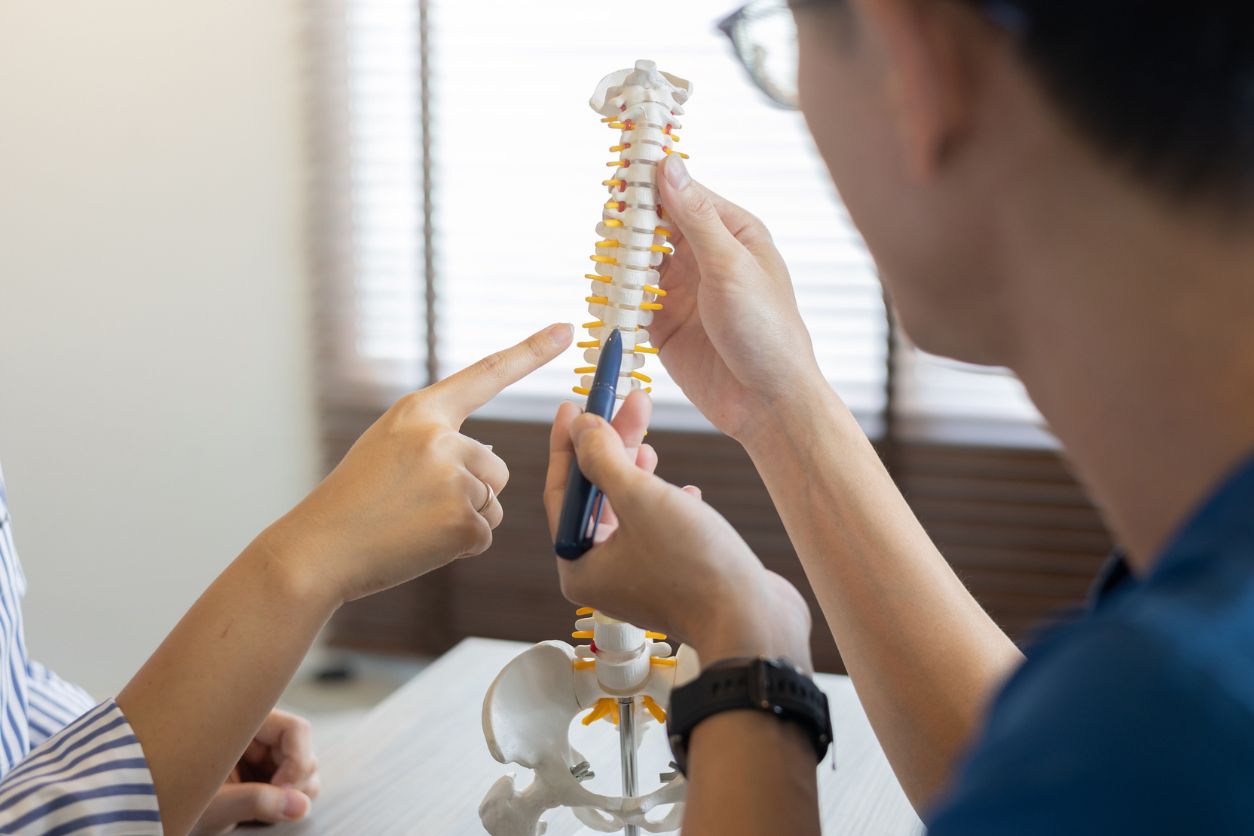
Thoracic scoliosis is a medical condition characterized by a sideways curvature of the spine in the mid-back. This condition can affect individuals of all ages. However, it is most commonly identified during adolescence. This condition can range from mild to severe, with varying degrees of curvature leading to different symptoms and requiring specific diagnostic approaches. Understanding thoracic scoliosis is crucial for early detection and effective management, ensuring those affected can maintain a high quality of life.
What Causes Thoracic Scoliosis?
Thoracic scoliosis can be caused by a variety of factors, such as neuromuscular conditions, idiopathic variables, and congenital factors. Typically, diagnosing thoracic scoliosis consists of a thorough physical exam, a medical history review, and an X-ray.
Congenital Factors
Congenital factors play a significant role in thoracic scoliosis, with genetics and developmental anomalies at the forefront. Those with a family history of scoliosis are more likely to develop this condition, as there is a genetic link that makes them more susceptible. Additionally, congenital scoliosis arises from spine malformations during fetal development, resulting in abnormally shaped vertebrae.
Neuromuscular Conditions
Neuromuscular conditions are another critical cause of thoracic scoliosis, impacting the spine’s structure and function. Disorders such as cerebral palsy and muscular dystrophy weaken the muscles around the spine, leading to imbalances that cause curvature. Additionally, nerve-related issues, including spina bifida, can disrupt normal spinal growth and alignment.
Idiopathic Causes
Idiopathic causes of thoracic scoliosis refer to cases where the exact cause remains unknown. This category typically emerges during adolescence, possibly linked to rapid growth spurts. Despite the uncertainty of its origins, understanding and treating idiopathic scoliosis focuses on monitoring and managing the curvature’s progression to ensure optimal health and spinal alignment.
Recognizing the Symptoms of Thoracic Scoliosis
Recognizing the symptoms of thoracic scoliosis is vital not only for a timely diagnosis but also for the implementation of effective treatment strategies. Some individuals may experience very mild symptoms, while others might face physical challenges or noticeable changes in their appearance. Awareness of the following common symptoms can help individuals seek medical advice and support at the earliest possible stage:
- Uneven Shoulders: One shoulder may appear higher than the other.
- Asymmetry in Rib Cage: The ribs on one side may seem more prominent, or there may be a noticeable rib hump.
- Leaning to One Side: A tendency to lean to one side when standing straight.
- Visible Curve in Spine: A visible arch in the back when bending forward.
- Back Pain: Some may experience discomfort or pain in the back, although it may not be present in all cases.
- Difficulty Breathing: Severe curves can cause the rib cage to press against the lungs, making breathing more difficult.
- Imbalance: Problems with balance and coordination may occur in more pronounced cases.
- Limited Mobility: Severe curves may also restrict the movement of the spine, limiting range of motion.
Manage Your Thoracic Scoliosis With Scoliosis Care
At Scoliosis Care, we are dedicated to providing comprehensive and personalized care for all our patients. With the expertise of Dr. David Siambanes, we are ready to help you manage your thoracic scoliosis effectively. Don’t let scoliosis dictate your life — take the first step toward a healthier, more comfortable future. Contact us now to schedule a consultation with Dr. Siambanes and begin your journey to improved spinal health and well-being.








